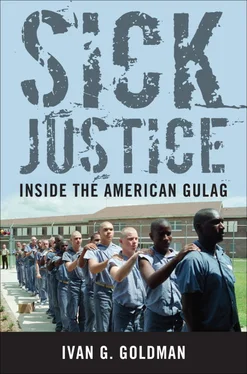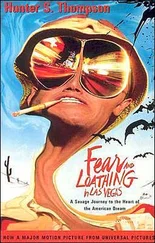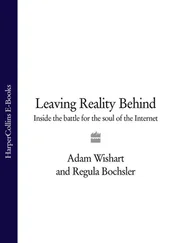MOST HARMFUL DRUG
A 2010 research project undertaken by Britain’s Centre for Crime and Justice Studies ranked the dangers of the most widely used drugs by analyzing a broad range of factors: how addictive the drug is, what harm it causes to the human body, environmental and family damage, and the drain on resources. Crack cocaine, methamphetamine, and heroin were more lethal to individuals, but when wider social effects were also considered, alcohol outranked all other substances. 24
LEAP calls drug interdiction “prohibition” because America’s thirteen years of failed alcohol prohibition are so clearly analogous to the drug war. Prohibition corrupted large swaths of police forces across the United States until it was finally repealed in 1933. Stamper and others who’ve quit the drug army point out that corruption is one of the many unintended negative consequences of existing policy. J. Edgar Hoover, normally quick to expand his bureaucratic turf, made sure the FBI wasn’t responsible for narcotics enforcement. He didn’t want his agents contaminated by the bribes that would surely be offered to his agents by drug networks.
So, it shouldn’t be any surprise that contemporary criminal syndicates use part of their financial gains, astronomically enhanced by the government’s attempts to stem drug flow, to corrupt police. U.S. Customs and Border Protection (CBP) reported in 2011 that during the previous seven years more than a hundred of its employees had been arrested or indicted for corruption, most in the cases relating to drug smuggling. “We have had recent persons hired within the last few years revealed to have entered on duty with CBP with the intent of engaging in corruption,” said James Tomsheck, assistant commissioner for the CBP’s Office of Internal Affairs. One-third of the agency’s job applicants failed lie-detector tests and it’s not known how many of these failed applicants might have been planning to augment their salaries by accepting cash for looking the other way. 25
PLANTING EVIDENCE
Accepting bribes from drug sellers isn’t the only form of corruption that police surrender to. Many defendants have accused police officers of planting drugs to secure a conviction. It’s impossible to know how frequently evidence planting occurs, but we know it does because sometimes the police are caught. Because the simple possession of a routinely available commodity is enough evidence to secure conviction, police officers have enormous power, and they’re not all strong enough to handle it. A much-documented blue veil of secrecy protects indiscretions, great and small, by those who step over the line. 26
In November 2006 Atlanta police smashed their way into the home of an elderly woman, Kathryn Johnston, after a drug dealer they’d arrested earlier identified her modest house as a narcotics dispensary. In the search warrant, the police falsely claimed that an informant had purchased drugs at the Johnston home and that the drug ring using the house had installed surveillance equipment. These claims allowed them to obtain a no-knock warrant. When the officers began battering down her door, Mrs. Johnston, who lived alone, took out a gun and fired a single shot through the door. Police returned fire, killing her. “She was without question an innocent civilian who was caught in the worst circumstance imaginable,” Fulton County district attorney Paul Howard said. “When we learned of her death, all of us imagined our own mothers and our own grandmothers in her place, and the thought made us shudder.” 27
After pouring into the house and finding no drugs, officers planted three bags of marijuana at the scene. They also turned in cocaine they said had been purchased at the house. But the botched raid garnered the attention of federal authorities, and it led them, said U.S. attorney David Nahmias, to discover a “culture of misconduct” in the Atlanta Police Department relating to drug arrests. Previous raids and arrests were also investigated after two officers who accepted plea bargains recounted details of other instances in which police lied to obtain search warrants and fabricated documentation of drug purchases. Officers cut corners, they said in their plea agreements, to “be considered productive officers and to meet [the department’s] performance targets.” 28
In 2008 New York Police Department officers in Brooklyn and Queens were caught hanging on to drugs they seized from suspects. At the time, authorities said the officers were using the drugs to reward informants. But the truth was darker. In a case against another officer in 2011, Steve Anderson, a former undercover cop, testified that to boost their arrest statistics, police routinely planted drugs on suspects, including individuals who’d never been arrested before. Anderson said that this practice was called “attaching bodies” to the drugs. In one instance, for which he was later indicted, Anderson himself had bought three bags of cocaine from a waiter and a disc jockey in a nightclub. He gave two of them to another officer, Henry Tavarez, who was having trouble meeting his arrest quota. Tavarez took the drugs back inside the club and used the “evidence” to arrest four people. Both Anderson and Tavarez pleaded guilty to misconduct in their case. 29
During the 2011 trial of the other officer, a judge asked Anderson what went through his mind as he helped frame innocent people. “Seeing it so much, it’s almost like you have no emotion with it,” Anderson replied. Prosecutors in Brooklyn and Queens were forced to dismiss about four hundred criminal cases based on these revelations. 30Lawyers raced around town, vying to find falsely convicted people and file civil cases on their behalf.
“SOMETHING I DID NOT DO”
Sheila Devereux, convicted of drug trafficking in Tulsa, Oklahoma, was sentenced to life in prison under the state’s three strikes law in 2005. She’d refused to accept a plea deal to serve seven years “because I was not going to plead guilty to something I did not do.” She said she had no knowledge of the six-plus grams of cocaine that police said they found in her boyfriend’s home, where she’d been staying temporarily while apartment hunting. She was, she said, completely clean of drugs when the Tulsa cops swept through the house. Back then, she said, she still “had faith in the justice system.” Her boyfriend ended up taking a deal to serve thirteen years for possessing approximately six hundred dollars’ worth of drugs. 31
Amazingly, Devereux, who was forty-two at the time of her arrest, remained incarcerated even after federal indictments alleged that two of the cops who raided the home, Officer Nick DeBruin and retired officer Harold R. Wells, belonged to a ring of eight Tulsa cops who stole drugs and money, planted drugs, falsified search warrants, tampered with witnesses, and violated civil rights. Tulsa deputy police chief Mark McCrory testified in federal court that at least one of those eight officers was also implicated in a multistate burglary ring that might be linked to several homicides. More than twenty cases were overturned as a result of the alleged ring of dirty cops. Devereux finally gained her freedom in 2011 when a court placed her on probation. 32
It’s worth noting the specifics in the two previous convictions that prosecutors used to secure Devereux’s life sentence. In November 1998 she had overdosed on cocaine. After recovering in the hospital, she was taken straight to jail and charged with felony possession. Several years later her truck broke down, and as she waited for help on the side of the road, police pulled up, found a marijuana cigarette in her car, and charged her with her second felony. She’d been sentenced to probation in both cases.
The ex-legislator who had originally introduced the three-strikes life-without-parole bill said later that he was offended by Devereux’s life sentence. He claimed the bill was intended as a way to crack down on violent habitual offenders. 33This intention, however, was apparently not conveyed in the language of the law. Too many legislators never learn that questions of crime and punishment are too complex to be answered by simplistic formulas that simply cannot fit every circumstance. Others learn the lesson too late, after they’ve inflicted more damage than they can ever repair. Whatever the intent of the legislation that ensnared Devereux, prosecutors were quick to take advantage of its broad language to obtain over-the-top sentences.
Читать дальше












